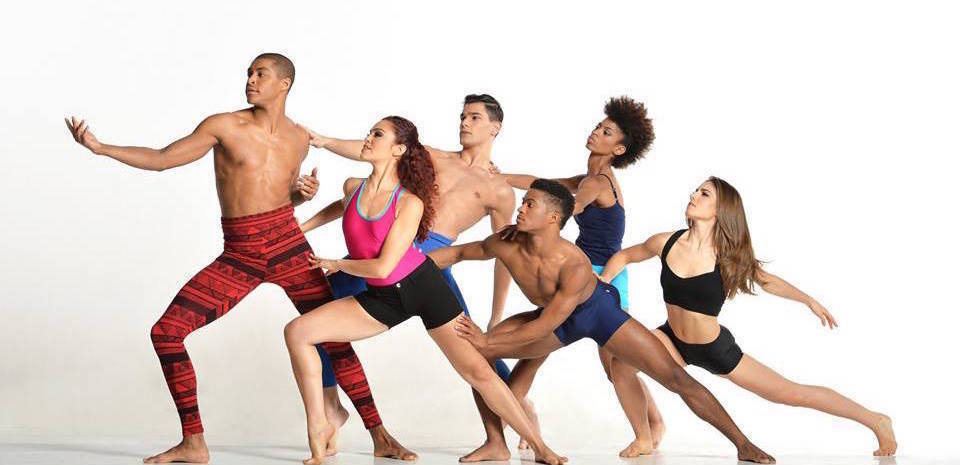Dancers share the benefits of performing with second companies.
Last month, Oregon Ballet Theatre (OBT) announced the launch of its junior company, OBT2. The company will be comprised of 10-12 dancers age 21 or under who will be under the direction of former Pennsylvania Ballet and American Ballet Theatre (ABT) dancer Lisa Sundstrom. OBT2 is the newest addition to this movement of second companies.
OBT joins other major ballet companies like ABT, Ballet Austin, Ballet West, Pennsylvania Ballet, Houston Ballet, Boston Ballet and Ballet Austin in ushering in a new second-tier, young-professionals company. Yet, it’s not just ballet organizations offering second companies – Paul Taylor Dance Company’s Taylor 2 and Alvin Ailey American Dance Theater’s Ailey II are particularly well known. However, Dayton Contemporary Dance Company’s DCDC2 and Milwaukee Ballet’s MBII, amongst many others, are similarly established.
So what is it about second companies that seem to be all the rage? Why do major companies feel these secondary troupes are vital and important?
While each one is different, there are still some overall benefits all second companies share. Here Dance Informa spoke to several dancers you have experienced being part of a second company.
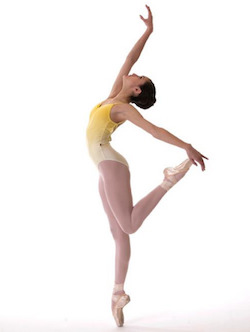
Alexandra Heier in 2011. Photo by Brian Mengini.
Professional Performance Opportunities
Alexandra Heier, now a dancer with Boston Ballet II (BBII), originally started her training at Boston Ballet School at the age of six. Having been a student at the school for many years and having attended prestigious programs like the Royal Danish Ballet summer intensive in Copenhagen, Denmark, she had come into contact with various ballet masters who helped shape her as a technician.
However, having reached a certain level of expertise, what Heier really needed was more on-stage time. With BBII, that’s exactly what she got.
Heier said, “Boston Ballet II has helped me to grow as an artist by allowing me to perform and learn from the inspiring dancers of Boston Ballet, while continuing my training and learning how to work with various choreographers and styles. Boston Ballet II provides the opportunity to learn and perform many different ballets with the company, as well as showcases BBII in challenging and lead roles in Boston Ballet School’s Next Generation and other smaller performances.”
By far, performance opportunities are the number one way for dancers to develop their artistry, which is why it’s crucial for aspiring professional dancers to get more time under the theater lights.
AAADT member Rachael McLaren, formerly a dancer with Ailey II, noted that the performance opportunities she received “were where artistry, command and nuance really developed” for her.
Touring Prospects
Taylor 2, which was founded in 1993, is known for touring extensively, reportedly having engagements in nearly 400 cities to date. In its 22 years, the troupe has traveled to the African nations of Mozambique, Botswana, Mauritius, Tanzania, Zimbabwe and Swaziland, plus cities in India and across the U.S.
Likewise, Ailey II is known for it’s extensive touring itinerary. Last season, the troupe performed in 38 cities as part of its 2014-15 world tour. Other second companies like ABTII and Houston Ballet II (HBII) often tour to regional towns across the continental U.S.
Former Ailey II dancer Taeler Cyrus, who is currently on Broadway in An American in Paris, said touring was “one of the greatest parts of being in Ailey II.”
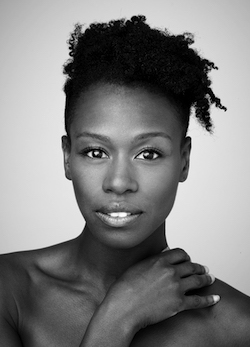
Alvin Ailey American Dance Theater’s Rachael McLaren. Photo by Andrew Eccles.
Cultivating Discipline and Stamina
Cyrus added, “Being on the road is fun and exciting but it also forces you to become extremely disciplined in order to maintain a healthy mind and body. The rigorous tour schedule and repertoire taught me a lot about what I needed in order to keep my body functioning and my spirits high. For example: Healthy eating habits at mall stops, warming up and cooling down before and after shows, pacing yourself through each performance. Now, being in a Broadway show, I am consistently using the tools I gained from my Ailey II touring experiences.”
While school training can aid in furthering self-will and determination, nothing really refines discipline like a professional dancer’s work schedule.
McLaren spoke to this as well, saying, “Ailey II operates as a fully professional company with a grueling rehearsal and performance schedule. You walk in as a young and fearless talent with raw energy and an insatiable appetite. From this, like the transition from caterpillar to butterfly, it’s our responsibility to develop our intelligence as dancers, and [become] masters of our instrument.”
Furthering Self-Confidence and Artistic Maturity
With these performance opportunities, touring aspects and deepened discipline comes a surge in a dancer’s confidence and wisdom. They start to trust their training and their natural instincts. They begin to loosen up with their partners. They often pick up acting skills that are important for character roles.
Another former Ailey II dancer, Ephraim Sykes, who is currently on Broadway in the hit show Hamilton, spoke to this. “Second companies are important for a young dancer’s career because it truly is a professional training ground upon which a dancer can find their identity as an artist, while continuing to receive school-like training and direction from artists that really know what it takes to not only survive this business but to always be growing in an organic way. It allows you time in your career to make mistakes, identify them and learn from them in a way that you can’t when going directly into a professional company where the expectations are higher than what you’ve ever experienced in school.”
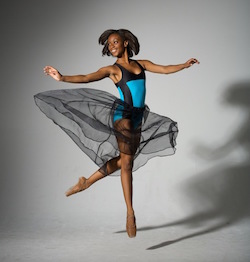
Taeler Cyrus for Lignes Dancewear. Photo by Jaqi Medlock.
Transition Time
This time that Sykes mentions is a major benefit of second companies. For lack of a better way to describe it, it’s a grace period.
Heier agrees. She said, “Second companies are very important to the development of dancers because they offer a transition from student to professional. During this time, young dancers learn how to navigate company life and have the opportunity to learn a wide-range of choreography.”
Better Likelihood of Acceptance to Main Company
It’s probably obvious, but one of the most important benefits of dancing in second companies is your better likelihood to then be accepted to the main companies. This has been proven to be true time and time again. Artistic directors are looking at the dancers in their midst, deciding if they fit the company’s aesthetic based on their current performance.
Rolando Yanes, the director of Milwaukee Ballet School and MBII, said 11 of the 22 current Milwaukee Ballet dancers are graduates of the MBII program. In his words, those are pretty good numbers! In addition, MBII has graduates all over the world, including Jacqueline Moscicke at Joffrey Ballet, Michael Linsmeier at OBT, Andrea Chickness at Leipzig Ballet in Germany, Julie Niekrasz and Lauren Pschirrer at Ballet Memphis, Kara Wilkes at Alonzo King LINES Ballet, Bea Castañeda at Singapore Dance Theatre, Makiko Sutani at Cincinnati Ballet, Emily Long at Ballet Quad Cities, Chelsea Paige Johnston at LA Ballet and Brandon Lee Sears in Dirty Dancing –The Classic Story on Stage.
Learning Secondary Skills
Many dancers in second companies get the opportunity to practice teaching dance as well. McLaren said, “We also taught dance classes to dancers and non-dancers. Teaching gives an artist another layer of intelligence to work with. And when teaching, you realize very quickly that good technique is the best way to prevent injury.”
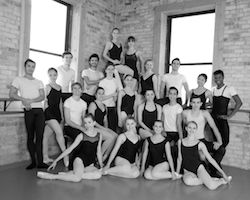
MBII dancers for the 2014-15 season. Photo by Jenn Mazza.
Through outreach programs, Yanes said MBII dancers “learn to work with all kinds of people from little kids to senior citizens.”
Yanes explained, “We are giving [the MBII dancers] tools that they can use in their lives as well as on stage. Some come out of the program absolutely ready to be professionals and some take their experience into another avenue of life – college or something completely new. Whatever they choose, we know we are giving them skills that are applicable for the rest of their lives.”
A few of MBII’s recent graduates have joined the Milwaukee Ballet School & Academy faculty, with one, Kristin Herlache, actually running the dance department at Pius XI High School in Milwaukee. Many are doing something totally new – Justin Genna is entering the MFA Program at American Conservatory Theatre in San Francisco, Hannah Morris just became a nurse for the U.S. Navy, Emily Vann is a Registered Nurse and Megan Baker is a Parade Dancer at Disneyland.
New Family
Finally, the last major benefit is this: community. As dancers rehearse, perform and travel together, a distinct bond forms.

Ephraim Sykes. Photo courtesy of IMDb.
Sykes said, “Since it is such a small company you have the chance to bond and connect with your peers as you grow together. It’s very special. Now, even though we all have ventured in different directions artistically, we have those two years that will forever connect us.”
This group of peers will now connect them to various other parts of the industry as each goes their own way. It will always be a strong network that each dancer can lean on for advice and recommendations.
For more information on OBT2, which will be announcing its touring schedule and repertory for this exciting first year in the coming months, visit www.obt.org.
By Chelsea Thomas of Dance Informa.
Photo (top): Ailey II. Photo by Eduardo Patino, NYC.


